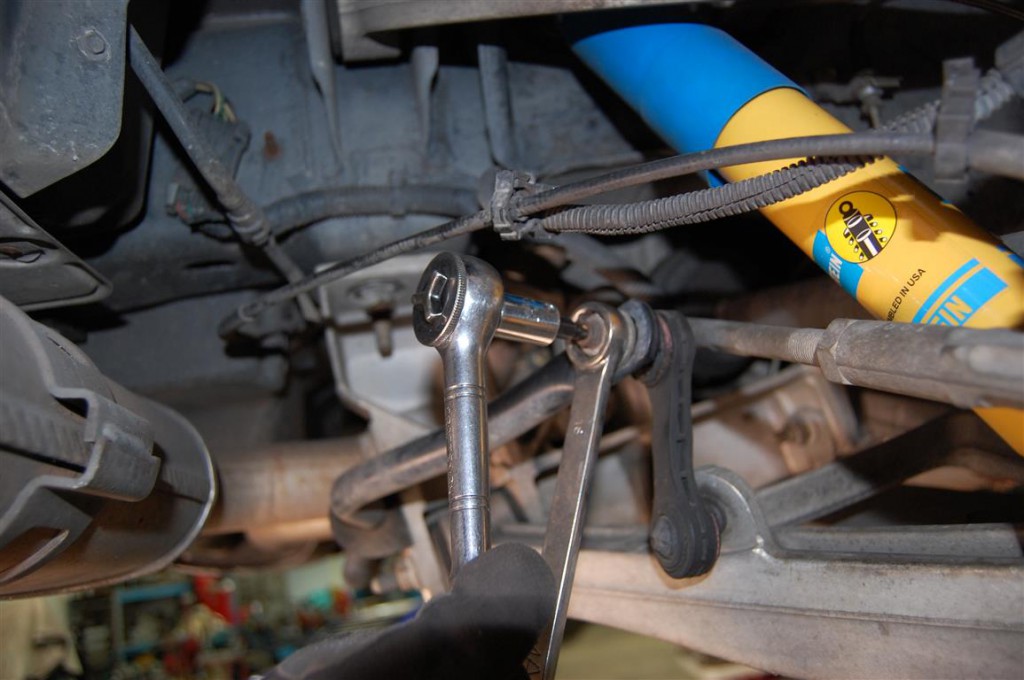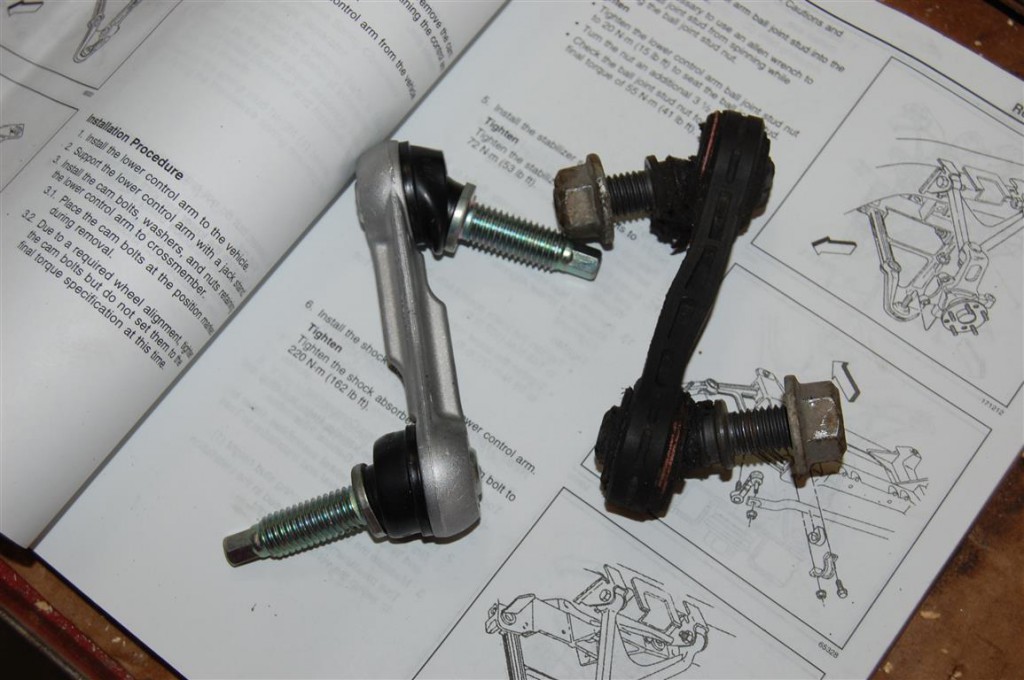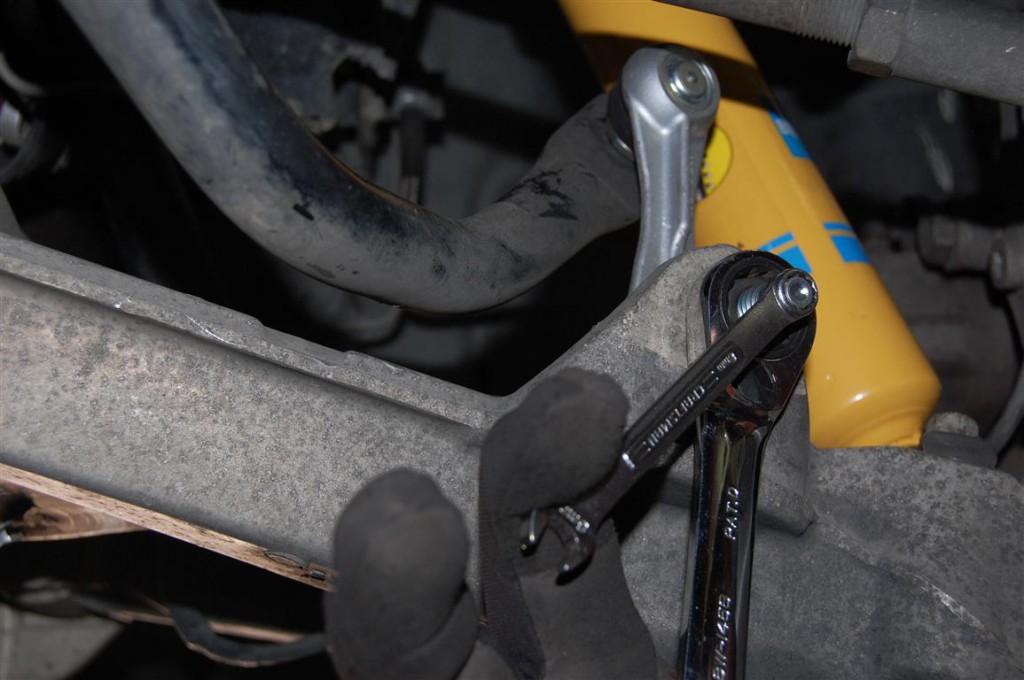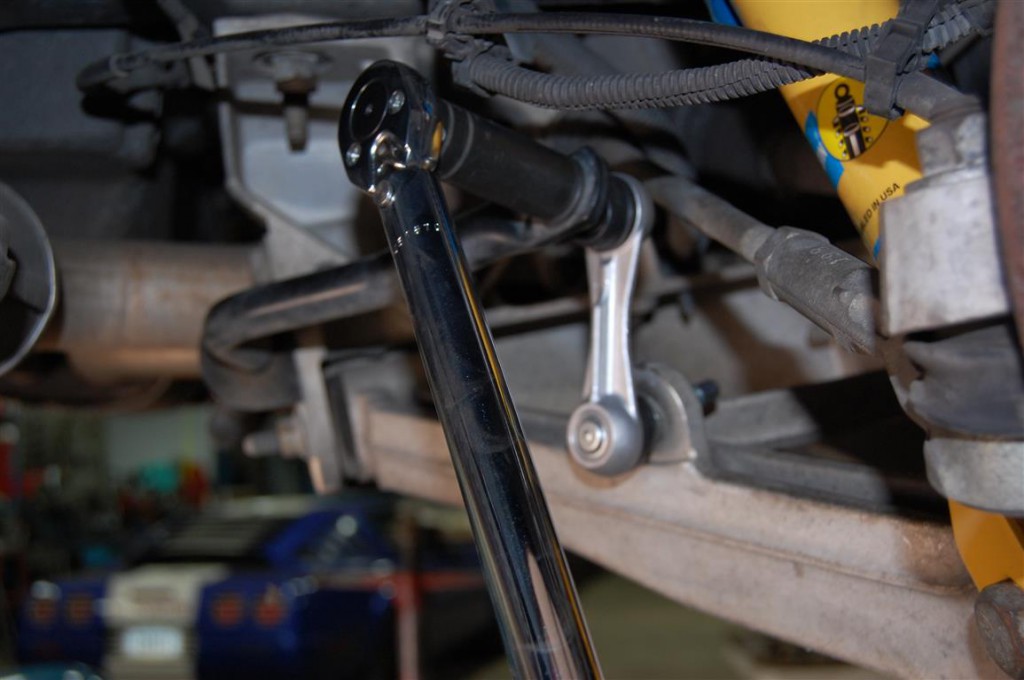When we had a chance to look under the first C5 in 1997 it was hard to believe a performance vehicle would have a plastic anti-roll (sway bar) link. To make things difficult lock nuts were used to hold the links stud into the control arms. That meant when someone removed the end link chances are they would rip the joints seal because they did not hold onto the stud during removal. The original plastic sway bar end links flexed under hard cornering making the anti-roll bar less beneficial. Of course a hard driving Corvette owner might break one or more on a track day. By 2002 GM finally dropped the plastic pieces replacing them with an aluminum anti-roll bar end link. One of the few things that did occur positive is the same end link is used from 1997-2019 so you can easily find and replace the weak original 1997-2001 links. If someone was not being careful and tore the end link seal during suspension service you may need to replace one or more on your 2002-2019 Corvette.
Corvette Central has the anti-roll bar end link you need for your C5, C6, or C7 Corvette in stock form or heavy-duty performance Heim joint style end links. The installation is simple and does not require much time or many tools to complete. We often replace the end links when replacing shocks making a simple job even easier. The most important thing to remember when replacing the end links; the wheels should be hanging free on the front or rear. If one wheel is hanging free and the other wheel is loaded the end link will also be loaded making it difficult to remove and possibly dangerous. This is not something you can do by jacking up one side of the Corvette at a time; it must be done with the front or rear jacked up. The following photos will show you how it’s done.
An 18mm wrench is used to turn the nut while a T40 Torx bit holds the stud. Of course you can spin the stud on the old pieces for removal.
You can see the difference in this original 1999 anti-roll bar end link which has some distortion from age. The aluminum end links available from Corvette Central are stout pieces with new rubber seals.
The new end links are installed in the same manner as removal except an 8mm wrench is used to hold the stud. The 8mm hex on the end of the stud makes the job easier during the tightening process.
Once the nut is tightened on the stud with your 18mm wrench a torque wrench can be used to finish the job. All of the anti-roll bar end link stud nuts are torqued to 53 foot pounds or 72 Newton meters.
Story and photos courtesy Chris Petris




Where can I locate an ABS pump for a 1999 Corvette, new, used or rebuilt?
Unfortunately we don’t have a way to get them new, you may have to look used.
The wheels don’t have to be hanging free if both are on a ramp and supporting the weight of the Corvette–correct? The stabilizer bar and it’s end links shouldn’t be under tension if both wheels on one end of the car are either hanging free or supporting the weight of the vehicle.
No, The wheels need to be hanging free to “unload” the sway bar links, as they are under tension. Lift at the front or rear so both front or both rear tires are off the ground for this job.
Sorry, but I have to disagree. I just got done replacing my sway bar end links on my 2006 Z06 and did NOT have to lift the rear. There was absolutely no tension on the links. I simply removed the nuts and pulled them out. But I only did the rear, not the front.
Just replaced all four links on my 97 C5. Original links were bad shape (but intact). The boots were torn and almost gone. Had it up on my lift, so the job was easy and took about 1.5 hours to complete.
These so called “Heavy Duty” links are not what they are cracked up to be either. My 2006 LS2 powered 3LT coupe’s links both front and rear were snapping so badly by 23000 miles, I replaced all 4 pieces under warranty. Now, at 45000 miles, the right front is snapping and the left front is not far behind. Fortunately the rear links are still OK. This car is a touring car so it is driven very conservatively and gets more love and care than it probably deserves.
When they are snapped, what do you feel or hear if anything? What is the effect?
I think he means a snapping or popping sound.
When the end links go bad you might get a clunking sound when you pull into a driveway and you don’t have to be going very fast just slowly pulling in could make them clunk.